Climate report blames Vic’s ‘wild’ weather extremes on global warming from coal and gas
Experts have weighed in on the Bureau of Meteorology’s annual climate statement — that blames our recent “whiplash” weather on global warming — warning “we’re on an unsustainable path”.
Victoria
Don't miss out on the headlines from Victoria. Followed categories will be added to My News.
Experts have weighed in on the Bureau of Meteorology annual climate statement — that attributes the nation’s recent “whiplash” weather to global warming — saying Australia must act now to slow the process.
The University of South Australia’s Associate Professor James Hopeward said the BOM report showed “we’re on an unsustainable path”.
“When the atmospheric composition and average surface temperature of an entire planet is rising, we’re not in a stable state. Add to this any number of worrying planetary-scale trends — declining biodiversity, overfishing, pollution of rivers and oceans, and depletion of non-renewable resources just to name a few — and it would take a special kind of denial to think we can continue growing the scale of our human project,” he said.
“But we continue to see policies aimed at doing exactly that, whether it is growing the size of our human population, or growing the amount each of us consumes … or, as is typically the case in Australian policy, pursuing both of these at the same time.
“It is time to use trends like those in the latest climate report to precipitate a much-needed conversation around the urgent transition from ‘growing’ to ‘grown up’.”
Global warming blamed for Vic’s ‘wild’ weather
Australia’s Climate Council has blamed global warming, from the burning of coal, oil, and gas, for Victoria’s recent “whiplash” weather, which has caused unseasonal downpours and floods, followed by scorching heat.
It describes climate whiplash as “wild swings between weather extremes” and says it is one of the main symptoms of a warming planet.
The Climate Council’s report, released just after midnight on Thursday, analyses Australia’s strange weather in late 2023 and so far this year.
It says global warming is “supercharging Australia’s weather systems, making them more unpredictable and dangerous than ever before”, and warns weather patterns of the past are likely no longer a reliable guide for the future.
It predicts floods and storms may return as early as mid this year.
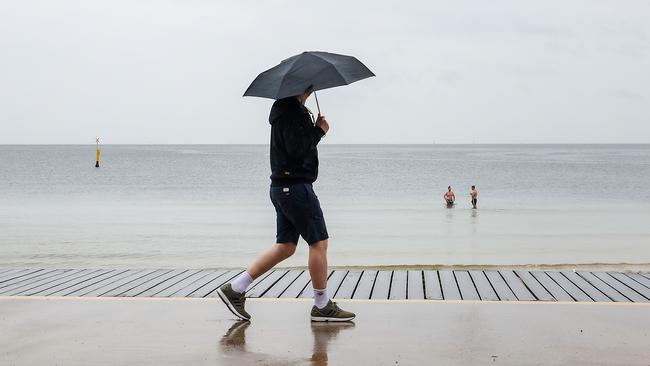
“Australia’s driest three months on record (were August to October 2023), then record rainfall in parts of Victoria. An early, ferocious fire season in Gippsland was immediately followed by extreme rainfall and flash flooding,” the report notes.
“2023’s announcement of an El Nino and an early start to fire seasons in Victoria boded for a hot, dry summer. What Victorians experienced instead was both dangerous fire and rainfall, claiming lives and homes in the state. Communities who were still recovering from devastating floods in 2022 have once again been inundated.”
Climate Council research director Dr Simon Bradshaw said for many communities “the great Australian summer is now something to be feared”.
“Climate change, driven by the burning of coal, oil and gas, means our weather is more extreme, dangerous and unpredictable,” he said.
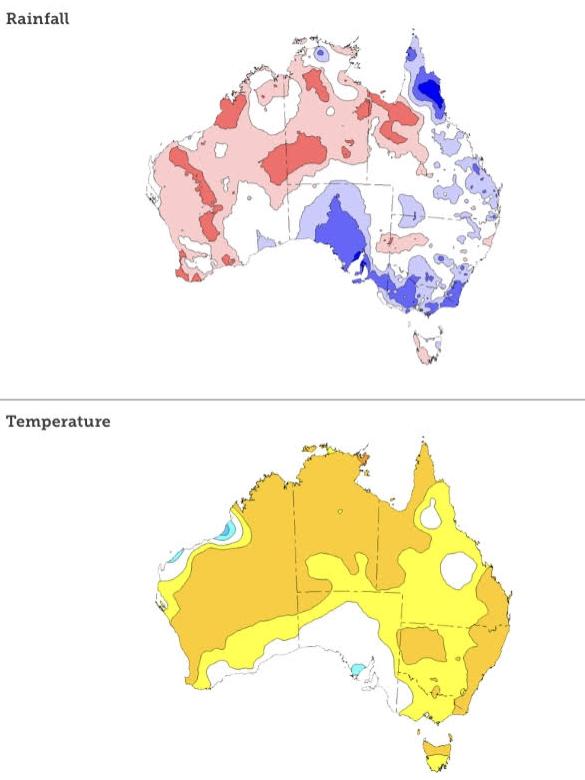
“From intense heat and fierce fire conditions to flooding rains and back again, Australians are experiencing climate whiplash: hurtled from one extreme to another with little time to recover.
“The stifling humidity, intense storms, soaring temperatures and other extremes of recent months are all key signs of a fast-warming planet.”
He called for national environment laws to be urgently reformed and an end to the approval of new coal and gas projects.
“And we must lock in the proposed fuel efficiency standard as soon as possible. At the same time, we must work much harder to prepare communities for the climate impacts of today and tomorrow,” Dr Bradshaw said.
The report says global sea surface temperatures have been “extraordinarily high throughout 2023 and into 2024”, with temperatures more than three degrees above average in some areas on Australia’s east coast and across the Tasman Sea.
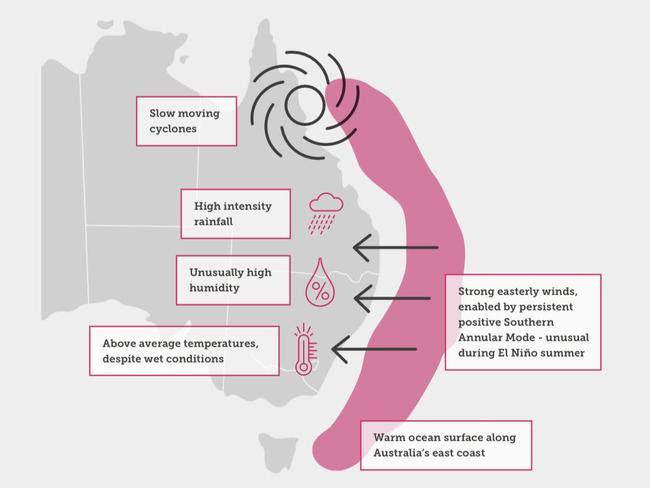
Together with strong easterly winds, this had caused the humidity and conditions for storms.
“By changing the climate, we are changing the conditions that govern natural climate drivers like El Nino and the conditions under which all weather forms. There are early signs that our overheating planet may also be changing the ways these drivers interact and behave.
“Much of the flooding we’ve experienced this summer has been the result of short, intense downpours that catch communities off guard, and can lead to dangerous flash flooding. Such events are expected to occur more often due to climate change,” the report says.
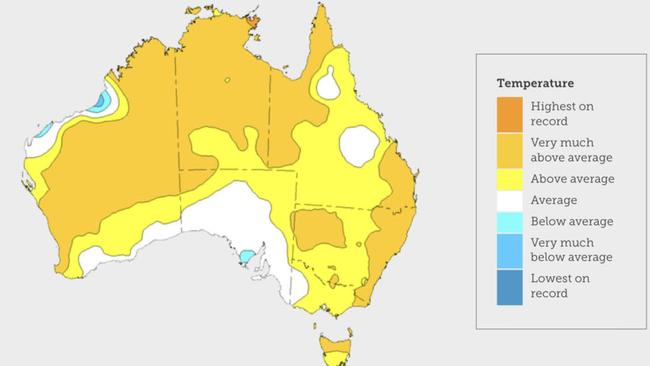
“The warm waters to our east and broader pattern of rising sea surface temperatures globally due to climate change, may be one of the factors underpinning why this year’s El Nino event has felt different from many in the past.
“Warm waters mean more evaporation. Combined with easterly winds, this has meant more moist air blowing on to the eastern seaboard, creating some very humid days and the conditions for storm systems that bring heavy rain.”
In January, all Australia’s eastern state capitals were more humid than the long-term average, the report states.
What happened to El Nino?
While El Nino events typically mean reduced rainfall for Australia through winter and spring — particularly for the eastern and northern parts of the continent — they do not mean no rain, the report explains.
“In simple terms, warm waters in the eastern tropical Pacific off the coast of South America are conducive to cloud formation and rainfall. This shifts rainfall away from our side of the Pacific … this doesn’t mean we won’t get rain during an El Nino event, particularly in the form of summer storms.
“El Nino events have less influence on rain patterns over summer, owing to the development of the monsoon in northern Australia and heightened thunderstorm activity.
“Notably, many of the intense downpours over the late spring and summer were the result of thunderstorm outbreaks … Every El Nino event is different, and this is not the first time we have experienced wet conditions during an El Nino event,” it says.
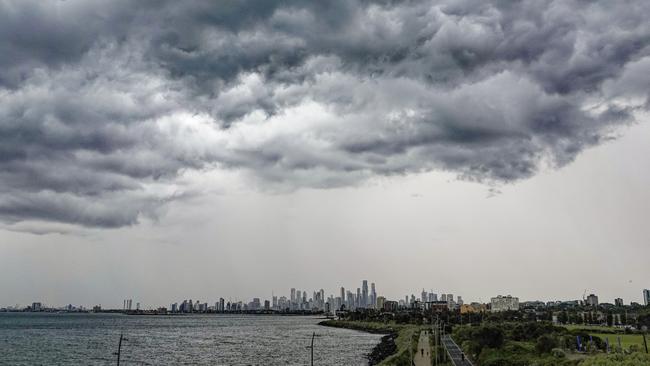
“Overall, the summer has highlighted the complexity of different climate drivers interacting against the background of a warming planet.
“What we’re experiencing is an example of what happens when you have different modes of climate variability, such as El Nino and a positive Southern Annular Mode, pulling in different directions.
“This is occurring against the backdrop of climate change, which is influencing ocean
temperatures in the region and, therefore, the behaviour of these drivers.
“While it is too early to draw any conclusions about likely ongoing changes, the one thing we can be certain of is that our climate is changing and so are our weather patterns.”




